2016 Big 12 spring football primer: Key storylines for each team

This time last spring, the Big 12 was still in crisis management mode after being snubbed in the inaugural College Football Playoff. Ohio State had leapfrogged both Baylor and TCU in the final week of the season, prompting a barrage of unrelenting questions: Does the Big 12 need to revamp its conference scheduling philosophy? Is league expansion imminent? What does “One True Champion” really mean?
What a difference a year makes. Oklahoma finished 11–1 as the undisputed Big 12 champ last fall before losing to Clemson in the Orange Bowl. Though the Sooners didn’t take home college football’s ultimate prize, they set the table for the league moving forward, as four Big 12 teams finished inside the top 20 of the final AP poll.
So, what’s at stake this spring? Will Oklahoma take steps toward defending its title? Or will another program put the pieces in place to make its own run this fall? Here are the storylines to watch for each Big 12 team over the coming weeks.
• MORE CONFERENCE SPRING PRIMERS: ACC | BIG TEN | SEC
Baylor: How will the Bears replace tons of experience in the trenches?
Baylor’s offense was predictably great again last season, averaging a national-best 48.1 points per game. Yet while guys like Seth Russell and Corey Coleman got the majority of the credit, the unit thrived behind a veteran offensive line. All-America tackle Spencer Drango and guard Blake Muir are gone, meaning position coach Randy Clements will need to mold a raw group into form this spring. On the other side of the line, defensive terrors Shawn Oakman and Andrew Billings are bound for the NFL, putting the onus on K.J. Smith and Brian Nance to take larger roles.
Iowa State: What will Matt Campbell’s vision for the program look like?
The Cyclones went 3–9 in 2015, but their performance wasn’t as bad as the record indicates. Every one of their defeats came to opponents that became bowl eligible, and a couple were finger-stuck-in-the-car-door levels of painful. (For example, they led Kansas State 35–14 before surrendering 24 unanswered points on Nov. 21.) The questions this spring are whether new coach Matt Campbell can instill a culture that will turn close calls into victories and how he plans to maximize the roster he inherits.
In Campbell’s final two seasons at Toledo, the Rockets had a balanced rushing attack, ranking 22nd and 10th, respectively, in average yards per carry. If he can devise ways to get the most out of rising sophomore tailback Mike Warren (who ran for 1,339 yards last fall), the Cyclones could be a dangerous offensive outfit.
The SI Extra Newsletter Get the best of Sports Illustrated delivered right to your inbox
Subscribe
Kansas: Can the Jayhawks improve in every facet of the game?
Kansas’s 2015 season was an unmitigated disaster. Coach David Beaty’s debut saw the defense allow an FBS-worst 560.8 yards per game as the Jayhawks lost by an average of 30.8 points en route to going 0–12. Trying to find the highlight would be like trying to identify the lighthearted scene in The Revenant—it doesn’t exist. But spring brings hope, and Kansas has several areas in which it could get better in the coming weeks. Redshirt freshman quarterback Carter Stanley should challenge rising sophomore Ryan Willis for reps, and defensive tackle Daniel Wise could build on his 3.5-sack total in his first year of college action. The road back to relevance has to start somewhere, and in ’16 this team has nowhere to go but up.
Kansas State: Will playmakers emerge in the receiving corps?
Two seasons ago the Wildcats’ Tyler Lockett and Curry Sexton composed one of the most fearsome receiving tandems in the Big 12. In 2015, however, Kansas State’s wideouts were nonfactors; only one player (DeAndre Burton) finished with more than 500 receiving yards, and the roster’s second-leading wideout (Kody Cook) has since graduated. For Bill Snyder’s squad to charge up the conference standings, it will need one of its young pass-catchers to establish a rapport with rising senior quarterback Joe Hubener this spring.
One guy to keep an eye on here? Dominique Heath. The 5’9”, 175-pounder has the speed to be a difference-maker, and he gained experience as a punt returner last fall. He was also the star of Kansas State’s 2015 spring game (217 kick return yards, 157 punt return yards)—a performance he’ll look to reprise this year.
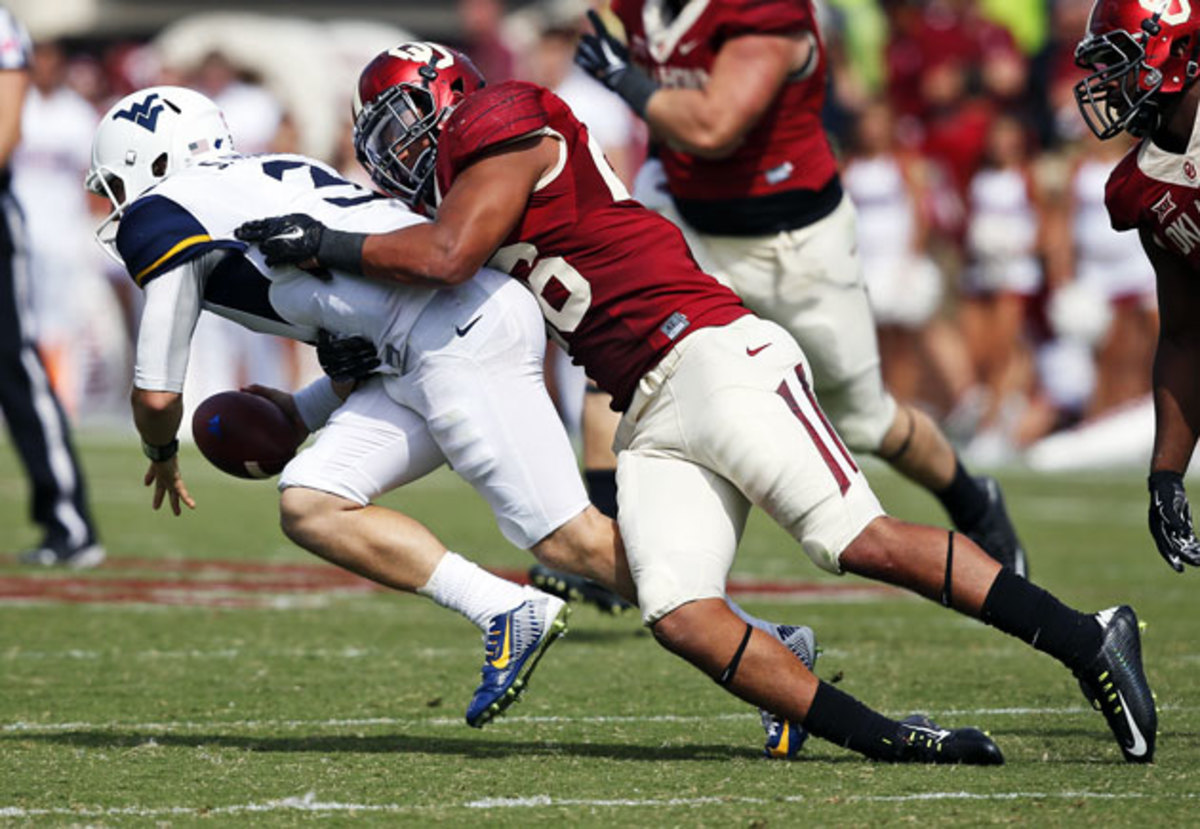
Oklahoma: Who will lead a revamped defense?
While the Big 12 features an abundance of prolific offenses, the Sooners boasted the conference’s best defense last fall, and it wasn’t close: They ranked first in the league in scoring defense (20.4 points per game allowed), passing defense (197.6 yards per game allowed) and rushing defense (149.7 yards per game allowed). Entering this spring, that unit loses almost all of its headliners, including linebacker Eric Striker, defensive end Charles Tapper and cornerback Zack Sanchez. For this program to contend for a repeat playoff berth, new standouts will need to step up, most crucially among a linebacking corps that loses five of its top six contributors. Here’s looking at you Ogbonnia Okoronkwo, Tay Evans and Ricky DeBerry.
Oklahoma State: Can the offensive line become more effective?
The Cowboys ranked 93rd nationally in sacks allowed (32) in 2015, yet even that was a marked improvement from their horrendous effort in ’14, when they were 113th (40 sacks allowed) in the same category. To build on a campaign in which it raced to a 10–0 start, Oklahoma State will have to take a group that sputtered last fall and transform it into a formidable front. The good news is all five starters along the line return; the bad news is those guys haven’t played especially well thus far. Bolstering the ground game will be the focal point this spring, as last year’s offense was exceptionally one-dimensional—it had 2,942 more passing than rushing yards.
GALLERY: BIG 12 PLAYERS TO WATCH IN 2016
Big 12 players to watch in 2016
KD Cannon, Baylor WR
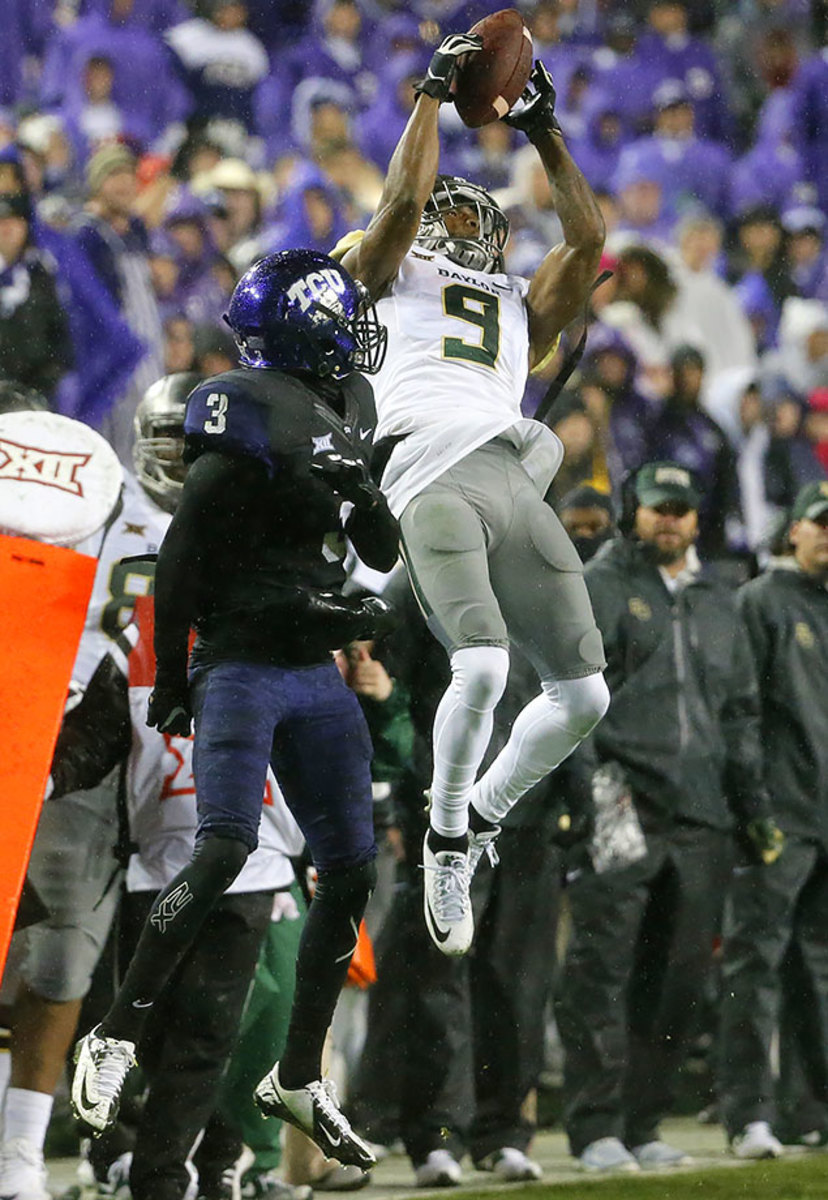
Cannon will step in as Baylor’s No. 1 receiver following the departure of Corey Coleman. After topping 1,000 yards receiving as a freshman, Cannon’s yardage and touchdowns were slightly down during his sophomore campaign, but that could be attributed to Seth Russell, Baylor’s starting quarterback, getting hurt with six games left in the season. With Russell back and Cannon now as the clear go-to target, Cannon is poised for a big year.
Kenny Hill, TCU QB
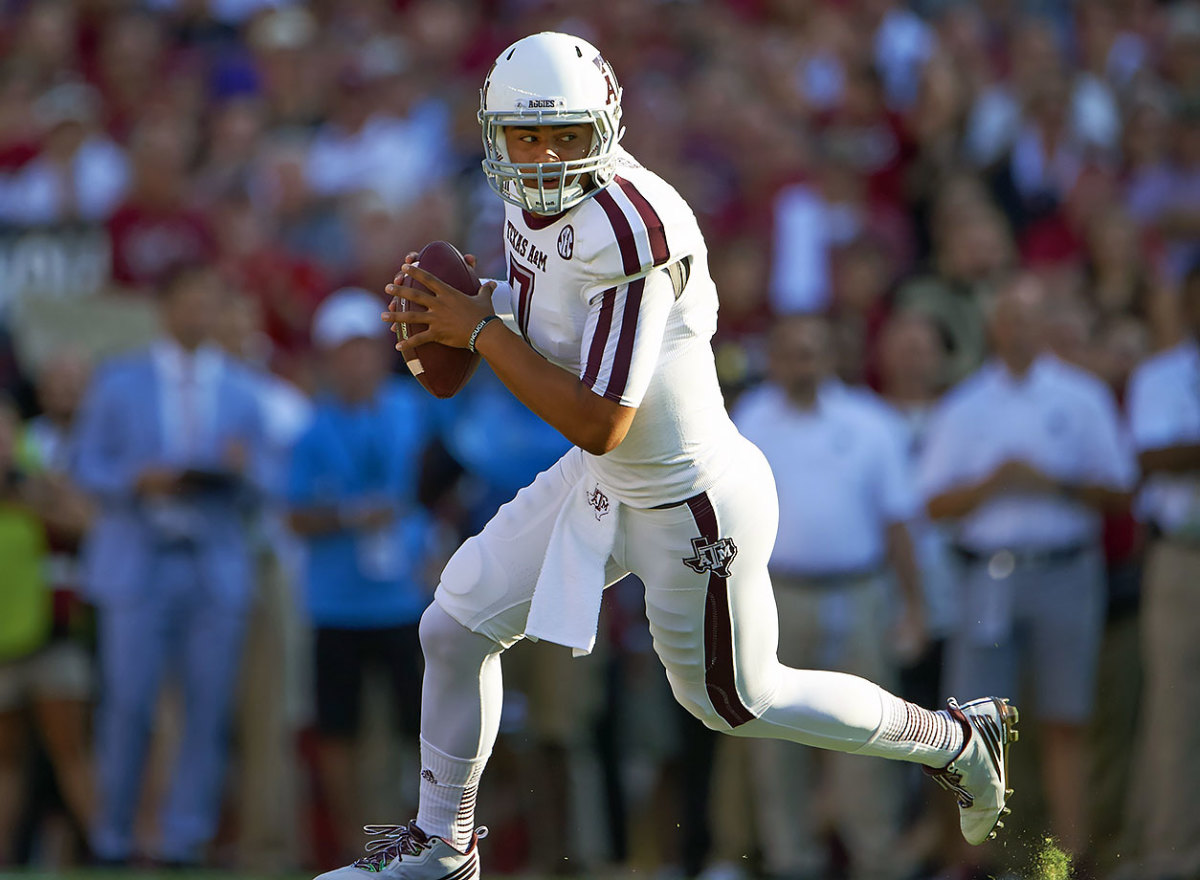
Hill made headlines two seasons ago when he threw for a Texas A&M-record 511 yards in his first start against South Carolina, igniting a surprise Heisman campaign and a plethora of nicknames. But, the rest of his season didn’t go as planned, and he ended up getting benched and then suspended before transferring to TCU. After sitting out last year, Hill will compete with sophomore Foster Sawyer for the right to replace Trevone Boykin. Hill looks like the front-runner for the spot.
Malik Jefferson, Texas LB
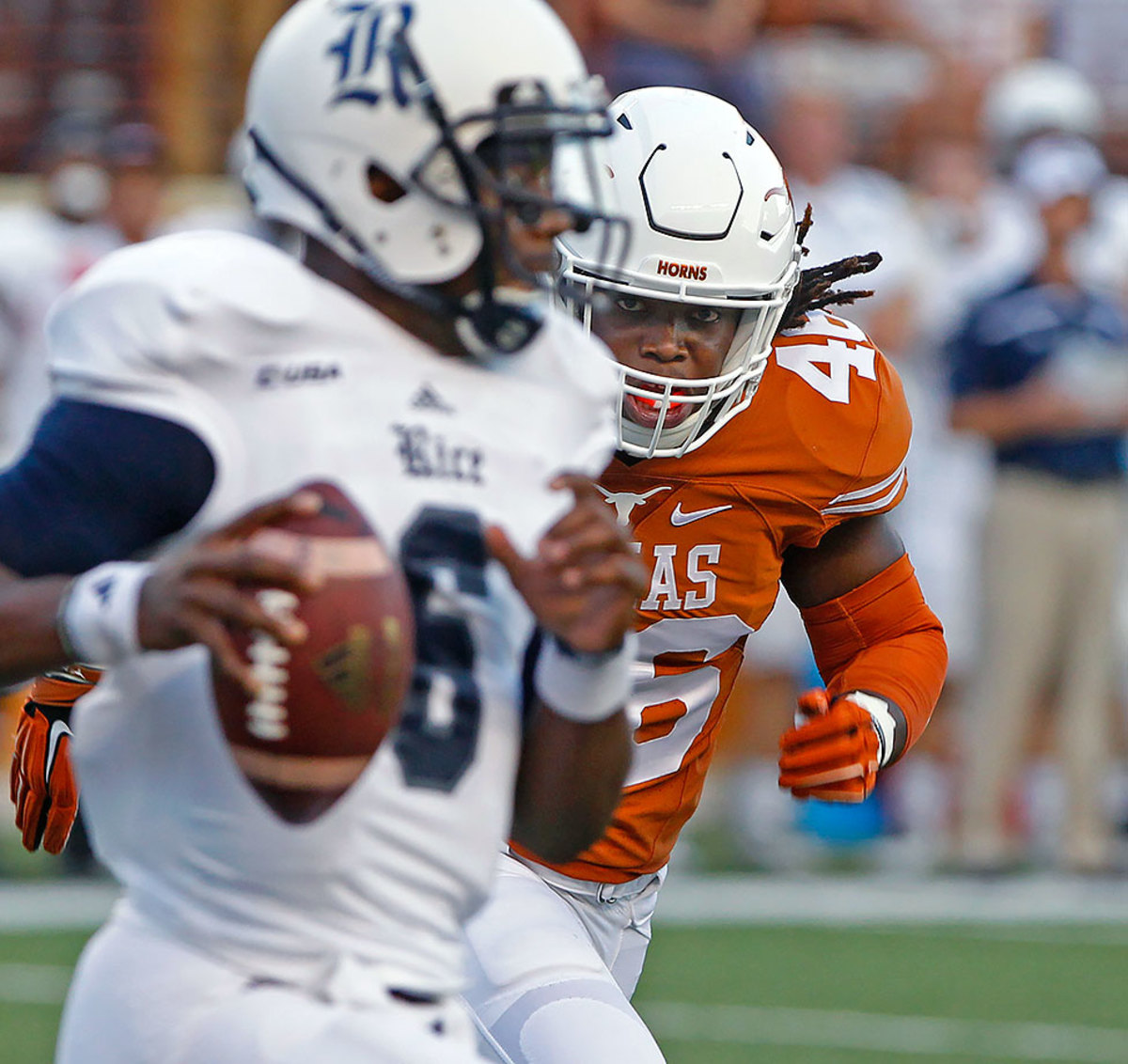
In the middle of a depressing year for Texas fans, Jefferson was one of the few bright spots. The linebacker was widely named a freshman All-America after his 2015 performance in which he started nine games and was second on the team with 61 tackles. He’ll anchor the Longhorns' defense in ’16 as they hope to bounce back from a disappointing 5–7 record.
Elijah Lee, Kansas State LB
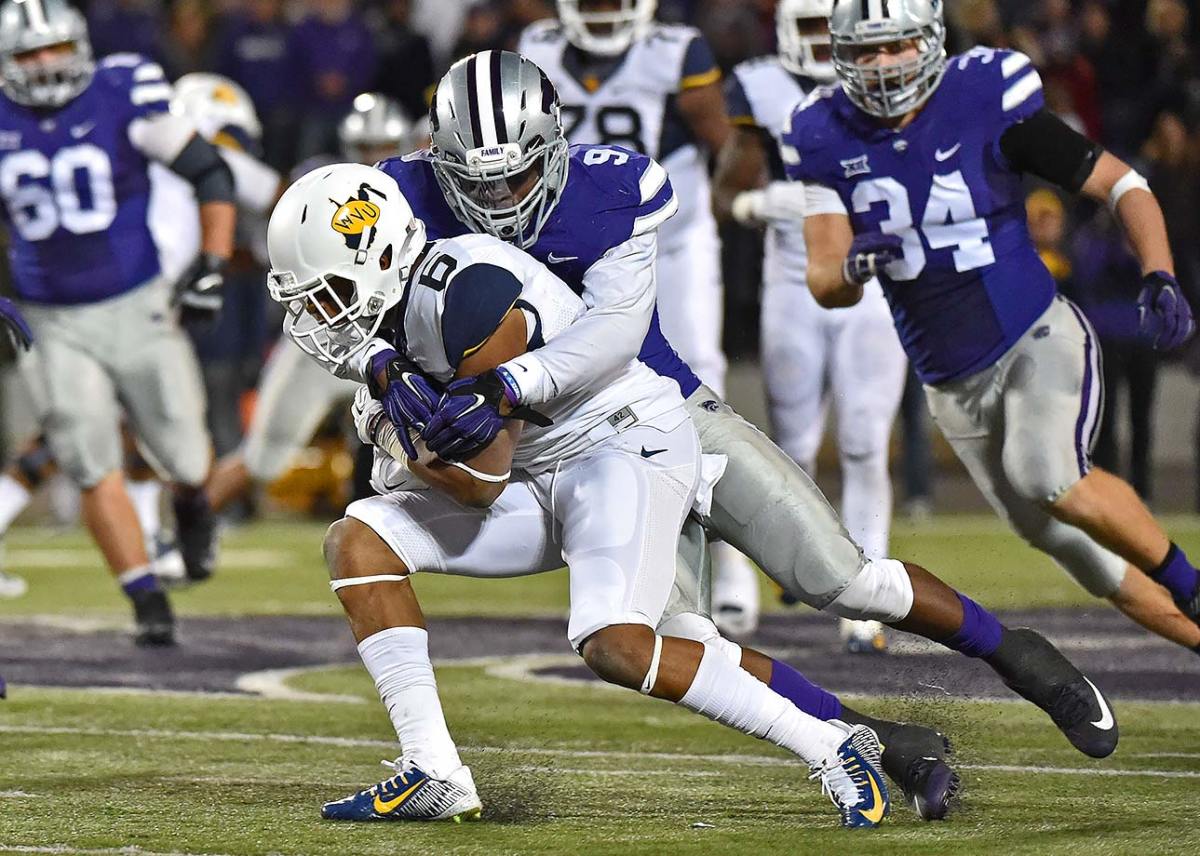
Elijah Lee was the foundation of Kansas State’s defense last season, recording 80 total tackles, 25 more than the next highest on the team. Lee’s performance—he added five sacks and three interceptions as well—earned him a second-team All-Big 12 selection.
Baker Mayfield, Oklahoma QB
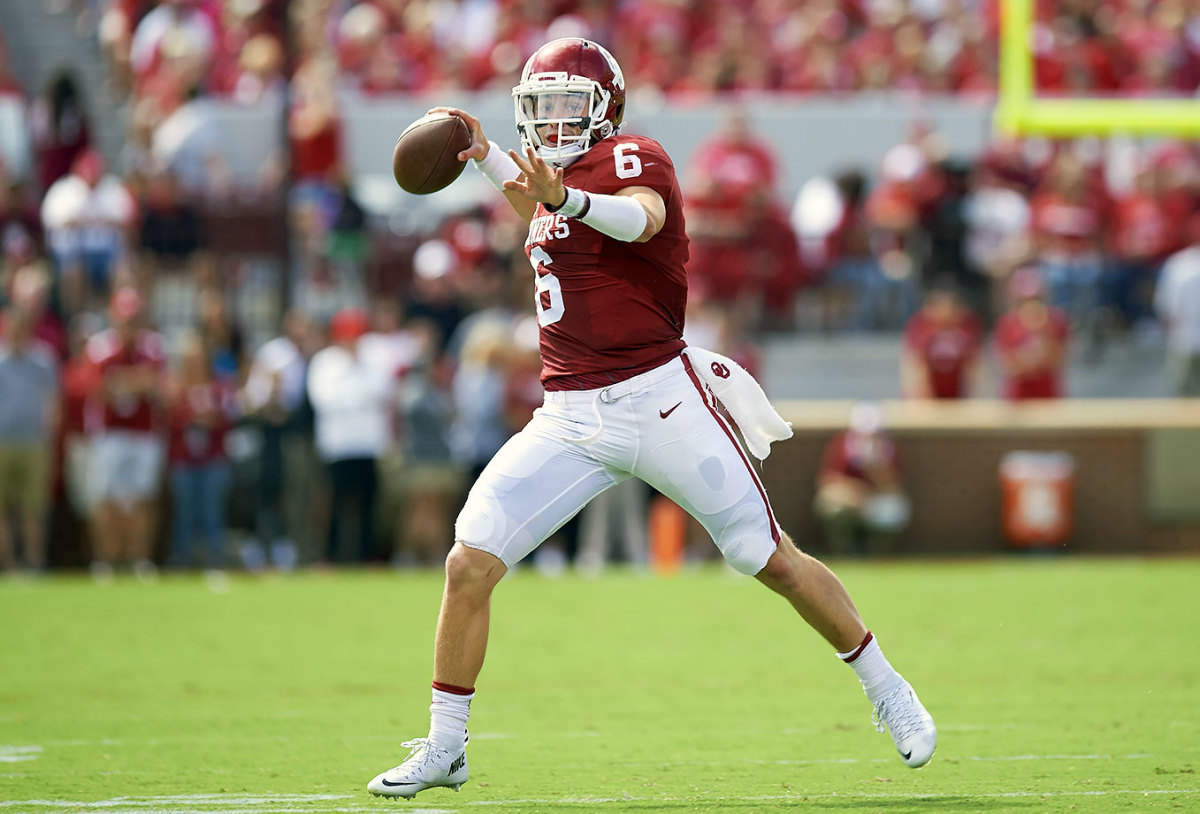
Oklahoma’s quarterback took college football by storm last year, leading the Sooners to a playoff berth behind 3,700 yards passing and 43 total touchdowns. The former walk-on made a late push for the Heisman Trophy in 2015 and is a front-runner heading into 2016.
Samaje Perine, Oklahoma RB
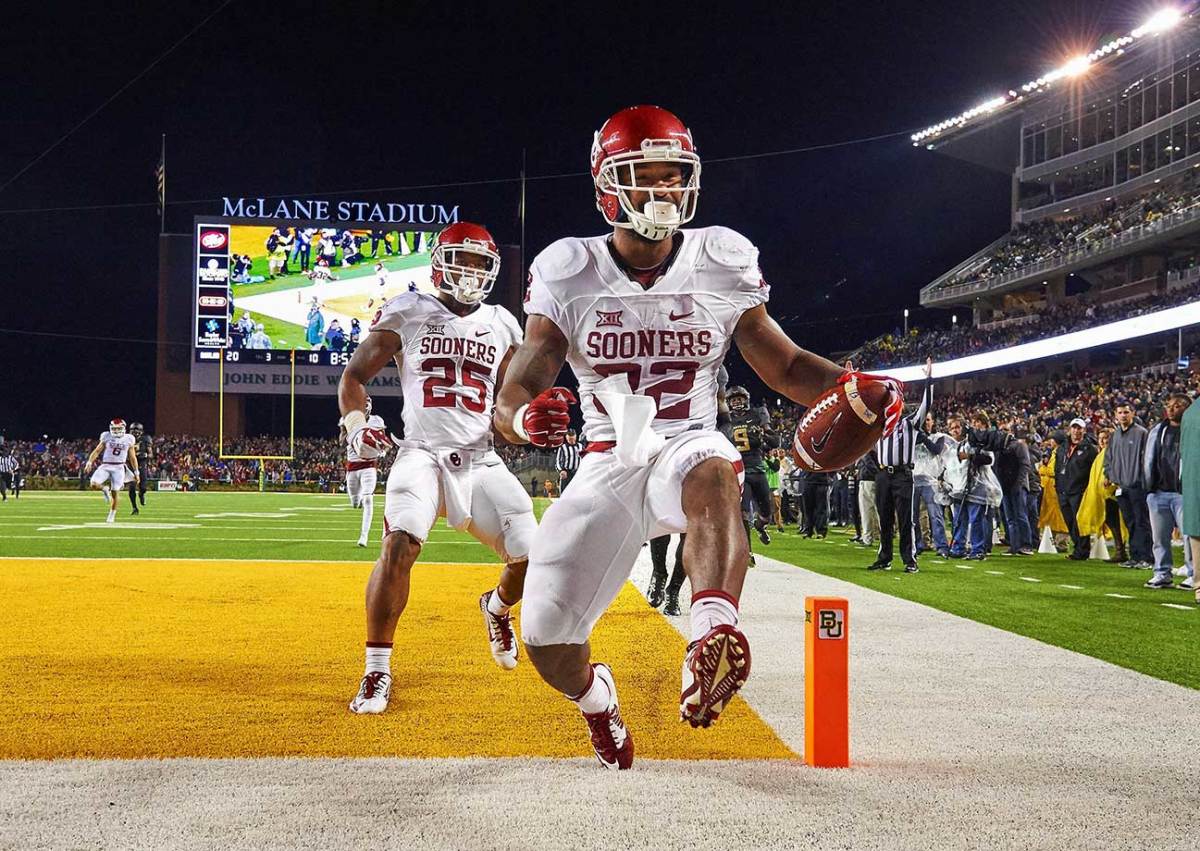
After rushing for a team-high 1,349 yards last year, Perine will enter his third year as a starter in 2016. The junior running back missed spring ball after getting ankle surgery, but he will be ready for the Sooners' season opener against Houston.
Seth Russell, Baylor QB
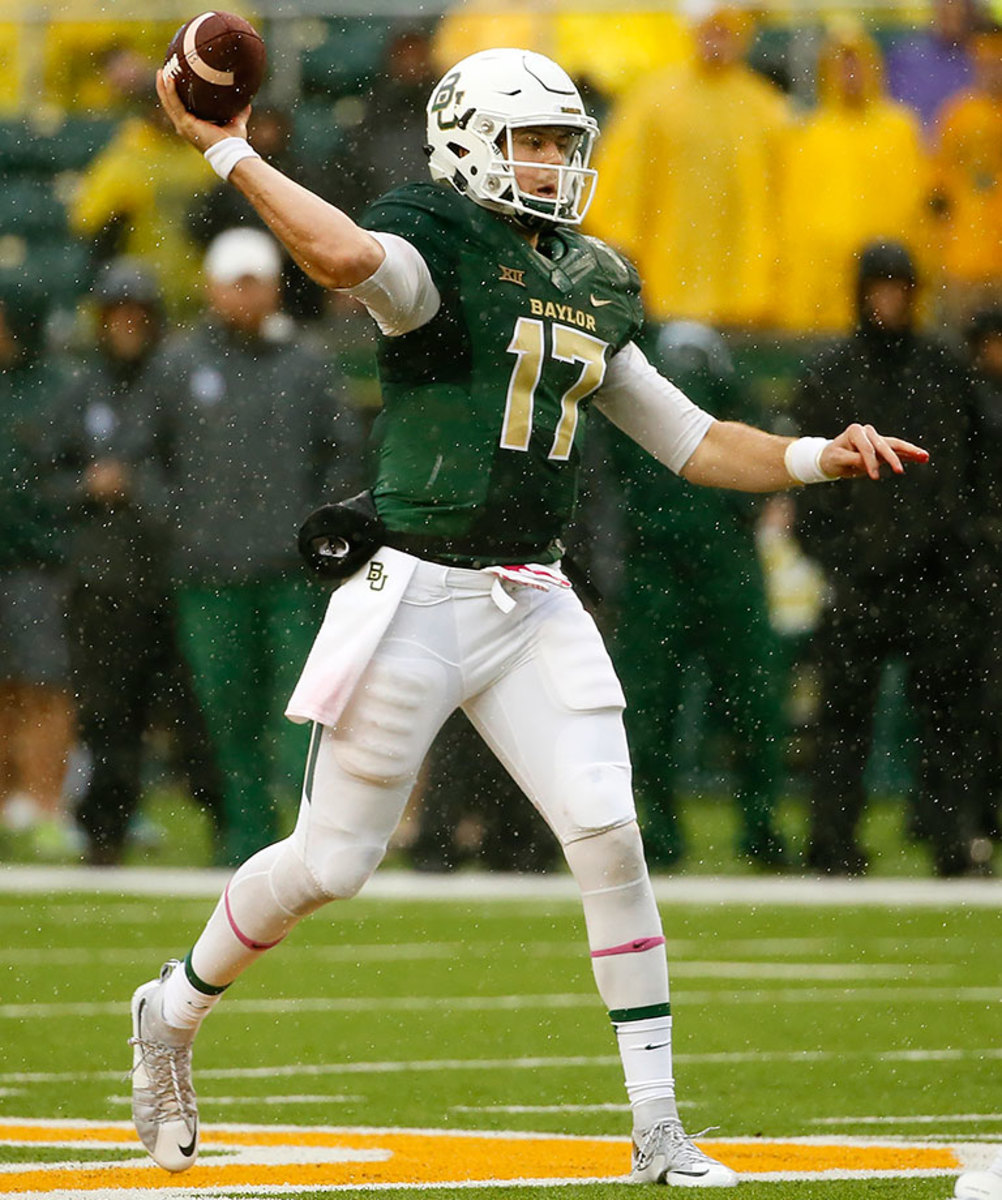
Before a neck fracture brought his 2015 season to a premature end, Russell had Baylor heading toward a possible College Football Playoff berth. With Jarrett Stidham's transfer, the Bears need Russell to stay healthy and return to peak form.
Mike Warren, Iowa State RB
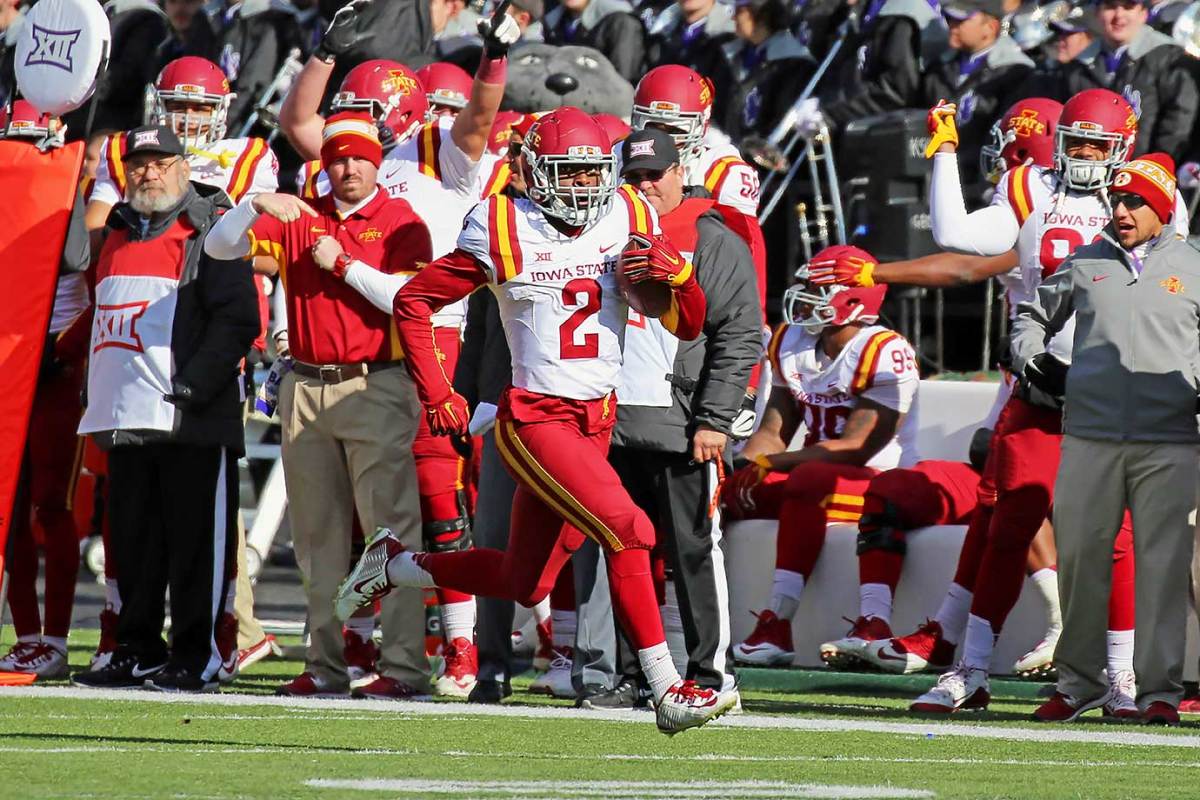
Warren became the first Cyclones player to be named Big 12 Offensive Freshman of the Year, as he led Iowa State with 1,366 rushing yards and five touchdowns. In a loss at Texas Tech, Warren rushed for 245 yards on 23 carries, one of six games in which he ran for more than 125 yards.
James Washington, Oklahoma State WR
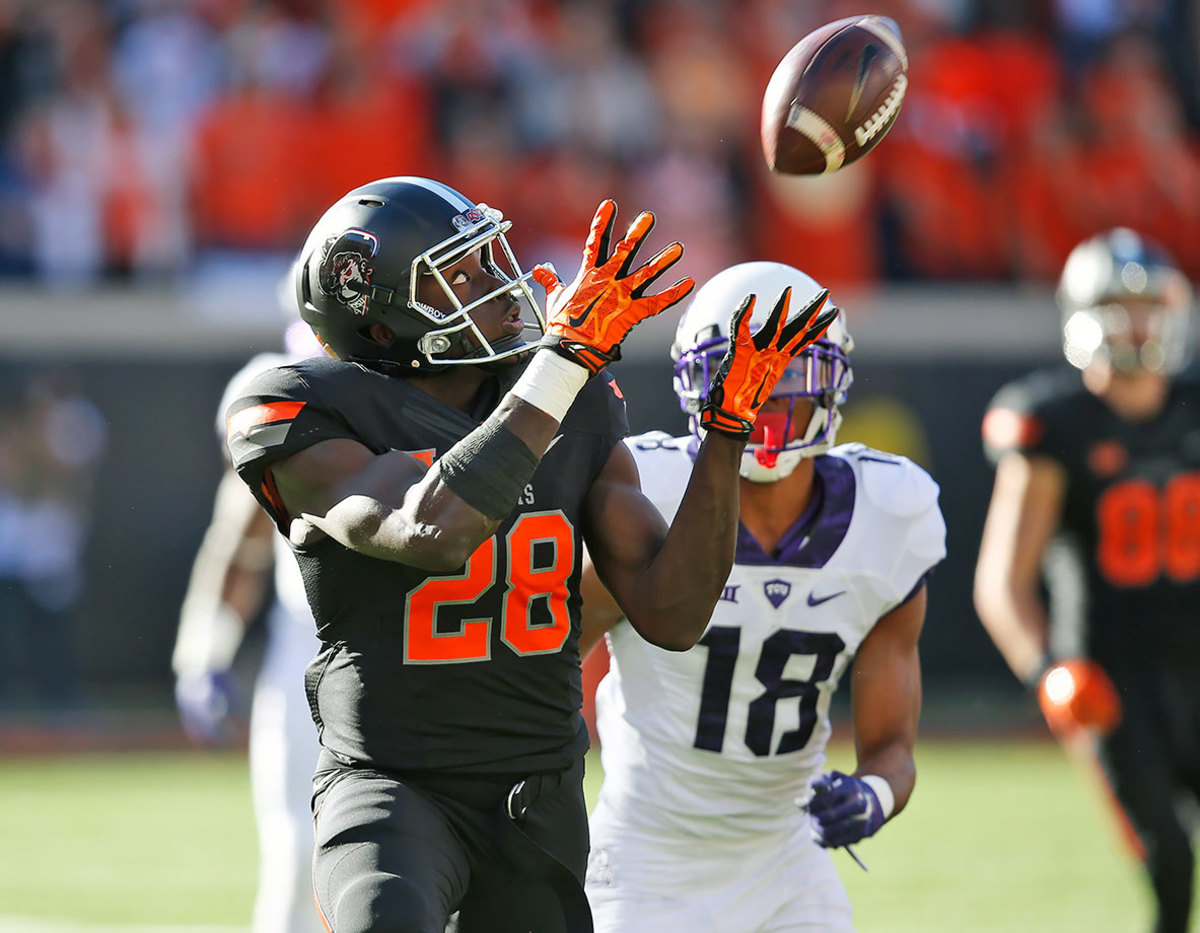
Oklahoma State’s top receiver broke out last year, topping 1,000 receiving yards and recording 10 touchdowns. Against Texas Tech, he had four receptions for 200 yards and two touchdowns, including a 75-yard score. Washington was named second-team All-Big 12 last year and should get a much brighter spotlight this fall now that Josh Doctson and Corey Coleman have left the conference.
Montrel Wilson, TCU LB

Wilson earned a starting spot as a true freshman in 2015, finishing with 61 tackles on the year. Now he's poised to become one of TCU's defensive leaders in a year when the Horned Frogs will have to lean on their defense more. Quarterback Trevone Boykin and receiver Josh Doctson are gone, raising the pressure on Wilson and the defense to create stops.
TCU: Will transfer Kenny Hill fill the void left by Trevone Boykin?
He’s back! Kenny Hill—he of the 511-yard, three-touchdown outing in Texas A&M’s season-opening beatdown of South Carolina in 2014—is now positioned to replace Trevone Boykin as the Horned Frogs’ starting quarterback. Hill, who burst onto the scene as the Heisman Trophy favorite in ’14 before losing his job to Kyle Allen (who has also since transferred from A&M), came to TCU last June and sat out all of the ’15 season in accordance with the NCAA’s transfer rules.
The question this spring is whether Hill can grasp co-coordinators Sonny Cumbie and Doug Meacham’s warp-speed offense, which should be a natural fit for a player who ran up-tempo schemes at both A&M and Southlake Carroll (Texas) High. Hill will compete with rising sophomores Foster Sawyer and Grayson Muehlstein, but every indication is that he enters practice as the frontrunner.
Texas: Can coordinator Sterlin Gilbert rejuvenate a listless offense?
The Longhorns’ attack was abysmal for the second straight season, ranking 83rd nationally in scoring offense (26.4 points per game) and 118th in passing offense (145.9 yards per game) last fall. There was no single culprit, with Charlie Strong changing play-callers after one game and Texas struggling through inconsistent quarterback play, but the result was an underwhelming 5–7 campaign that leaves the staff with a win-or-else ultimatum heading into 2016. Gilbert, who came to the program from Tulsa in December, will install an Art Briles-type offense that must address several key questions this spring. Who should start under center? And who will establish himself among a receiving corps that returns just one player (John Burt) who had more than 11 catches in ’15? The next few weeks constitute the beginning of an offensive overhaul, and patience in Austin is growing thin.
Texas Tech: Will a defensive line rotation begin to take shape?
The Red Raiders’ defensive youth movement began last season, but it should reach an entirely new level entering 2016. Breiden Fehoko, who was named an All-Big 12 honorable mention as a true freshman, is one of the only major pieces to return on the Texas Tech defensive line. This spring will be spent sorting out who deserves playing time come fall, and it will be key for guys like Zach Barnes and Gary Moore to establish themselves; Kliff Kingsbury brought on six defensive linemen in this year’s recruiting class. No matter who separates from the pack, they will face plenty of work ahead. The Raiders allowed an average of 6.17 yards per carry last year, better than only two FBS teams (Idaho and Eastern Michigan).
West Virginia: Who will bolster the secondary?
The Mountaineers’ defense, which was regularly torched in the program’s first few years in the Big 12, proved to be one of the conference’s best in 2015. It finished second in the league in total defense (412.2 yards per game allowed) and showed a knack for capitalizing on opponents’ errors, tying for fifth nationally in turnovers gained (31). The secondary was decimated by departures, though, as Karl Joseph, KJ Dillon, Daryl Worley, Terrell Chestnut and Rick Rumph all left for graduation or the NFL draft. This spring Dana Holgorsen’s goal will be identifying his next wave of defensive backs, and he’ll keep a close eye on the progress of cornerback Rasul Douglas. A four-star juco transfer out of Nassau Community College, Douglas has the frame (6’2”, 208 pounds) and athleticism to become a star in Morgantown.
